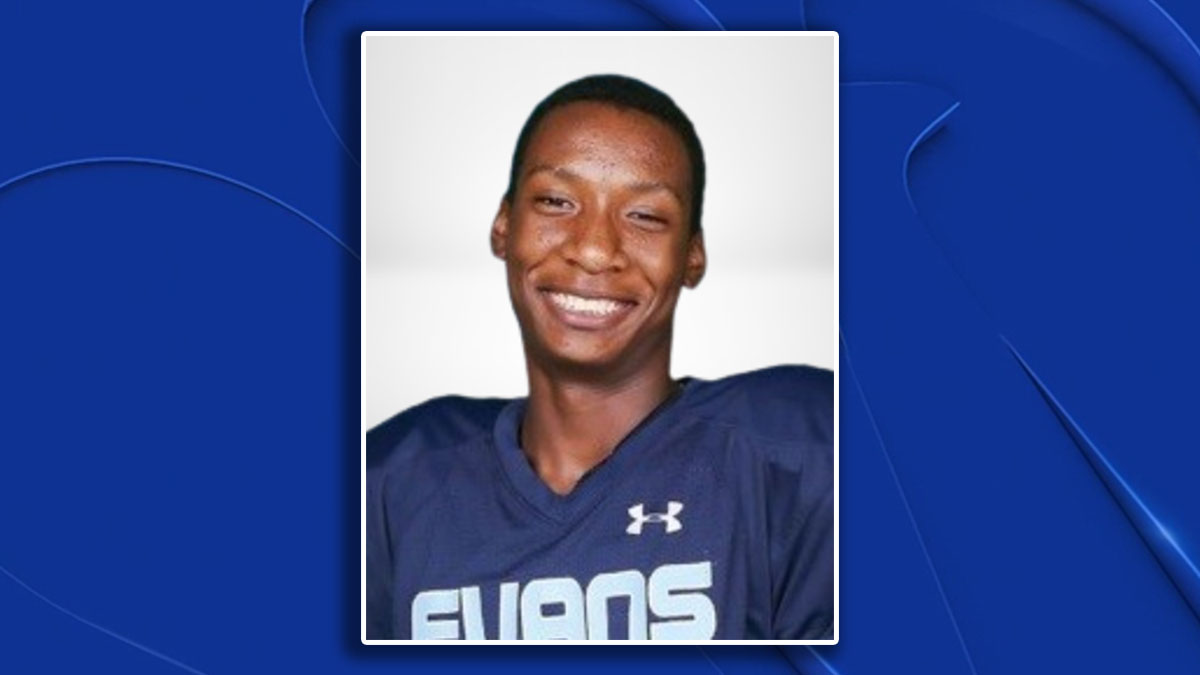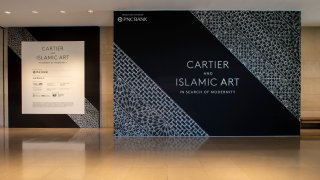
Among hundreds of Islamic artworks, Cartier tiaras and necklaces sparkle with history and artistic inspiration at Cartier and Islamic Art: In Search of Modernity, now on view at the Dallas Museum of Art through September 18.
Making its US premiere in Dallas, the exhibition features more than 400 objects from the holdings of Cartier, the Musée des Arts Décoratifs, Paris, Musée du Louvre, the Keir Collection of Islamic Art currently on loan to the Dallas Museum of Art, and other major international collections.
“We are committed to exploring jewelry not only as a historical signifier of wealth and taste, but as a reflection of a global and evolving interest in design, material, and forms,” said Dr. Agustin Arteaga, The Eugene McDermott Director at the Dallas Museum of Art.
This exhibition investigates the influence of Islamic art and architecture on Cartier through the cultural lens of Paris during the late 19th and early 20th centuries. Louis J. Cartier, a partner and eventual director of Cartier’s Paris branch, collected Islamic art, encountering it at major exhibitions and vibrant marketplaces in Paris.
Get top local stories in DFW delivered to you every morning. >Sign up for NBC DFW's News Headlines newsletter.
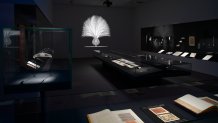
While preparing for the exhibition’s opening, Sarah Schleuning, The Margot B. Perot Senior Curator of Decorative Arts and Design at the Dallas Museum of Art and co-curator of this exhibition, revisited her initial notes about the project.
“I have a lot about lenses, this idea of looking through an individual like Louis Cartier, through the House, and what the perceptions, what they saw, how we could trace and track those ideas, those sources and how they then change and shift and shape the new works they made,” she said.
Local
The latest news from around North Texas.
Along with Schleuning, the curatorial team includes Dr. Heather Ecker, the former Marguerite S. Hoffman and Thomas W. Lentz Curator of Islamic and Medieval Art at the Dallas Museum of Art; Évelyn Possémé, Chief Curator of Ancient and Modern Jewelry at the Musée des Arts Décoratifs, Paris; and Judith Hénon, Curator and Deputy Director of the Department of Islamic Art at the Musee du Louvre, Paris.
The curatorial team had significant access to Cartier’s extensive archives. When Cartier created its archive of antique Cartier pieces with the intention of sharing the works with the public, a guiding principle was established.
“Cartier is never the curator of its own shows,” said Pierre Rainero, Director of Image, Style, and Heritage at Cartier. “The idea was that only an external eye could be at the origin of a show in a public institution.”
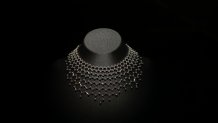
With that curatorial freedom, the team explored how Islamic art and techniques influenced the creative process at Cartier over time. The exhibition pairs Cartier jewelry and design sketches with Islamic art featuring similar attributes such as form and motifs.
“For this exhibition, what we really wanted to focus on is this idea of talking about how across time, media and geography, artists are inspired and create new ideas," Schleuning said. "They are always in pursuit of the most modern ideas and that’s what is personified by Cartier in this show. What you see are these articulations, this kind of kaleidoscope of creativity that cross form, material, motif, technique, colors, and we continue to shift that idea through the entire installation."
Much of the planning of this exhibition occurred during the pandemic, forcing the curatorial team to work over Zoom. Being able to see the objects in-person is part of the power of the exhibition.
“So, I wanted the show to be about the objects and to get as much proximity and possibility to see the real and to understand the magic of that,” Schleuning said. “And what I hope is that people will be inspired by that alchemy.”
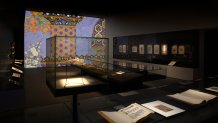
Diller, Scofidio + Renfro designed the exhibition with two different museums in mind. The exhibition first opened last fall at the Musée des Arts Décoratifs in Paris before traveling to Dallas. Compared with the Dallas Museum of Art’s contemporary white boxes, Musée des Arts Décoratifs had a huge nave with several smaller galleries on the side.
“The two very, very different spaces were confounding, I have to say,” said Elizabeth Diller, partner of Diller, Scofidio + Renfro. “And at that point, this sort of breakthrough happened: let’s just radically change the size and scale and with that would come seeing these artifacts through another lens.”
The solution was to create videos allowing visitors to go inside a piece of jewelry to see its architecture and better understand its Islamic influence. The videos are shown alongside the jewelry, giving visitors a dramatic experience of the jewels.
“In this density of beautiful artifacts, which are rather small, how do you interrupt that in a way and create a pacing with the possibility of this digital representation that gives you more information, different kind of information, so kind of a palate cleansing and a new layer of information between,” Diller said.
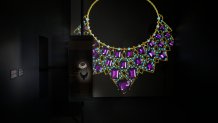
From Louis Cartier’s collection of Persian and Indian art to Cartier’s signature Tutti Frutti pieces, the exhibition shows the cyclical evolution of the creative process.
“What I hope people walk away with is this incredible idea what it means to be inspired, to look at things, to look at things from the past, to look at ideas that continue to be filtered through other creative makers and how they inspire new ideas,” Schleuning said.
Learn more: https://dma.org/

